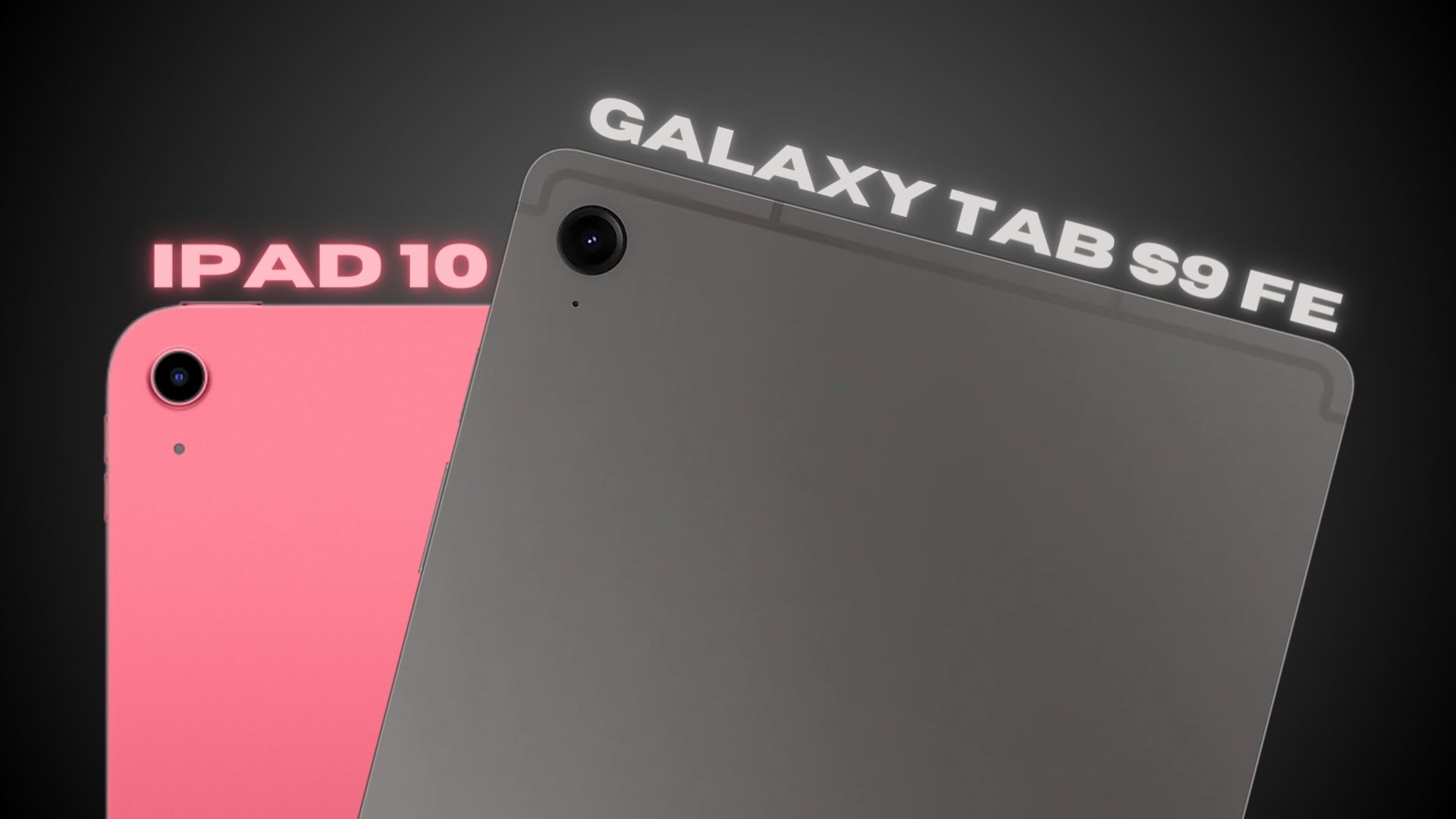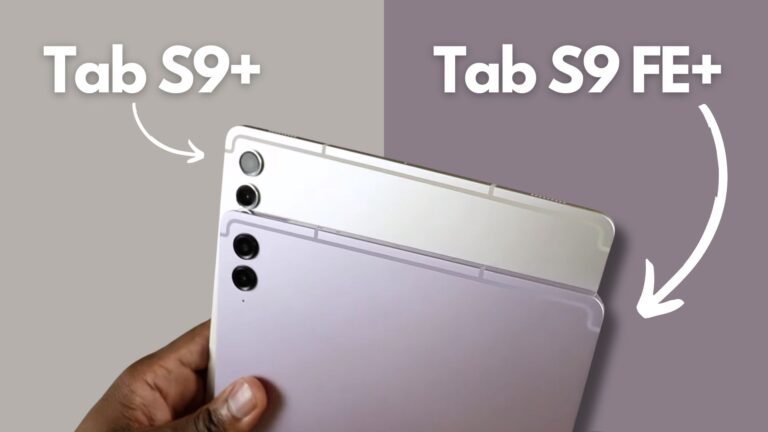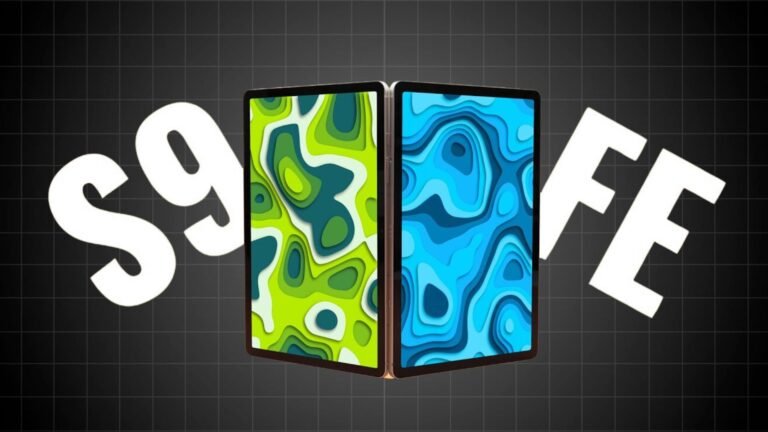Lately, I’ve been quite thrilled, about the launch of the Samsung Tab S9 FE, which has paved the way for a comparison, with the iPad 10. I initially thought it would be easy to choose between their sizes and price points. However, as I dug deeper into the details, I realized that making a decision is not as straightforward as it seems. It turned out to be a journey that I’m excited to discuss with you.
Price, Storage & Specs
When looking at the storage capacity of the Samsung Tab S9 FE and iPad 10, it’s clear that the Tab S9 FE has a considerable advantage. It comes with 128 GB internal memory right out of the box – twice as much as 64GB offered by iPad 10.
To make this even clearer, remember that OS and system data for an average iPad consumes around 21 GB while downloading just one game such as PUBG already takes up 20 GB! That means without any additional files or apps on your device there is almost two-thirds of space taken away from what you get with an initial purchase of iPad 10. So, suppose you’re someone who downloads a lot more than games (perhaps other content like movies?). In that case, having double the amount to play around will be super helpful in allowing not only more flexibility but also removing potential frustrations down the line due to limited storage capacity!
Both tablets provide a more advanced 256 GB storage capacity, but if you want to upgrade to the iPad, it’ll cost $150, whereas upgrading the Tab S9 FE only costs $70. On top of that, this Samsung bad boy has something extra – a micro-SD card slot for an up to 1 TB expansion! That means even MORE room for all your apps and other files like photos & videos so there’s much greater flexibility in terms of how much content you can store.
| Galaxy Tab S9 FE | iPad 10 | |
| Storage | 128GB 6GB RAM, 256GB 8GB RAM | 64GB 4GB RAM, 256GB 4GB RAM |
| CPU | Exynos 1380 (5 nm) | Apple A14 Bionic (5 nm) |
| Operating System | Android 13, One UI 5.1 | iPadOS 16.1, upgradable to iPadOS 17.1.1 |
| Battery | 8000 mAh | 7606 mAh |
| Ports | USB Type-C | USB-C 2.0 |
| Dimensions | 254.3 x 165.8 x 6.5 mm | 248.6 x 179.5 x 7 mm |
| Colors | Mint, Silver, Gray, Lavender | Silver, Blue, Pink, Yellow |
| Weight | 524g | 477g (Wi-Fi), 481g (LTE) |
| Front Camera | 12MP, ultrawide | 12MP, f/2.4 ultrawide |
| Rear Camera | 8MP, wide | 12MP, f/1.8 wide |
Design & Build

The Apple iPad 10 and the Samsung Tab S9 FE have some pretty striking physical similarities – especially considering that Apple just ditched their old iPad 9 design.
Both sport a machined aluminum body with rounded corners and squared-off edges. Still, the Tab S9 FE sets itself apart by having bezels that are just slightly slimmer in comparison.
An important part of the design for both tablets is their fingerprint sensor embedded within the power button – enhancing security as well as making it convenient to use. The placement varies between them though; iPad 10’s fingerprint sensor is located on its shorter edge while Tab S9FE’s paid resides on its longer side. Nevertheless, they work equally efficiently and precisely no matter where they have been placed!
When it comes to audio, both tablets look similar on the outside with four speaker grills on the iPad 10 and two on Tab S9 FE. But in reality, each of these has only 2 speakers: one placed at either side. The quality of their sound is pretty impressive but can’t match up to those expensive higher-end models available out there. In comparison though, Tab S9 FE stands ahead as its speakers are somewhat louder creating brighter sounds too.
The advantage that sets apart Tab S9 FE is its IP68 rating which makes for an unbeatable protection from water & dust – a must-have feature if you plan to take your tab outdoors or travel quite often!
Display

When comparing the displays of the iPad 10 and the Tab S9 FE each tablet has its strengths and specifications. The iPad 10 comes with a retina display measuring 10.9 inches providing a rate of 60 Hertz and a resolution of 1640, by 2360 pixels. It has an aspect ratio of 4;3 and a pixel density of 264 PPI resulting in image quality with colors. This aspect ratio is particularly advantageous for tasks like note-taking in portrait mode especially when using the Apple Pencil.
The Tab S9 FE also offers a 10.9-inch display. Uses IPS LCD technology with a higher refresh rate of 90 Hertz. Its resolution is slightly lower at 1440 by 2304 pixels. It has an aspect ratio of 16;10 resulting in a density of 249 PPI. The Tab S9 FE aspect ratio is more suitable for video viewing as it aligns better with content dimensions resulting in images and smaller black bars.
One significant difference, between these two tablets lies in their display lamination. The Tab S9 FE features a laminated display where the touch layer, cover glass, and display are fused seamlessly. The iPad 10 on the other hand features a space, between the screen and its protective glass. Although this gap is not easily noticeable during activities such, as browsing the internet or playing games it becomes more apparent when utilizing a stylus.
The one advantage of a non-laminated display is that if the display gets damaged, most of the time it’s just a cover glass so replacement is relatively inexpensive. With a fully laminated display, the entire display assembly has to be replaced even if you just cracked the cover glass.
S Pen vs Apple Pencil

When comparing the options, for the iPad 10 and the Tab S9 FE there are some factors to consider. The iPad 10 offers two versions of the Apple Pencil. The first-generation Apple Pencil, priced at $99 needs a cable for pairing and charging along with a USB to lightning adapter. On the other hand, there’s a USB C Apple Pencil available for $79 that also requires a wire for pairing and charging but doesn’t need an adapter. However, it doesn’t offer pressure sensitivity, but it does magnetically attach to the side of the iPad.
Also Read: Apple Pencil Buyer’s Guide
In contrast, the Tab S9 FE comes with the S Pen included in its price. This stylus can be easily stored on either side or at the back of the tablet. Notably, it has a button. Does not require charging for writing and drawing purposes.
When it comes to tactile experience users often note that the Apple Pencil has a tip that may feel slightly rigid against the screen— to writing on a single sheet of paper on a hard surface. On the other hand, users find that the S Pen has a tip that offers some give upon contact with the screen—giving you a sensation closer to writing on a thicker pad of paper where pressure results, in compression.
In the end, it all comes down to preference when deciding between these styluses. They each have their features and determining which one is better is subjective and depends on individual comfort and usage requirements.
Camera
The iPad 10 and the Tab S9 FE differ slightly in the resolution of their rear cameras, with the iPad 10 featuring a 12MP camera compared to the 8MP camera on the Tab S9 FE. However, in terms of overall quality, the cameras on both devices are quite comparable.
Regarding the front-facing cameras, both tablets are equipped with 12MP cameras, and both support ultrawide framing, offering similar capabilities in this aspect.

Performance
I was excited to compare the gaming performance of two tablets. In my gaming collection, I enjoy playing titles like Genshin, Asphalt, and PUBG well as some less demanding games. In more resource-intensive games, I could see the advantage of the iPad’s A14 chip over the Exynos 1380.
Considering how game development is constantly evolving and developers are always pushing the boundaries of CPU and GPU potential games are becoming increasingly resource-intensive. With this trend in mind, I prefer a tablet that offers CPU and GPU performance. This way I can ensure that my device remains capable and efficient for four to five years or even longer.

When it comes to raw performance metrics it’s clear that Apple’s chip has an advantage in both single-core and multi-core performance as well as GPU benchmarks.
This superiority isn’t just based on numbers; it translates into a smoother user experience during everyday tasks. Although both tablets handle activities, like web browsing, video streaming, and social media usage well it’s hard not to notice the iPad’s quicker response time and overall snappiness.
The distinction becomes more noticeable when it comes to tasks such, as intense video editing. In these situations, iPad’s exceptional performance sets it apart as an option.
Battery Life

When evaluating the battery life of tablets, it’s important to consider more than the specifications. Real-world usage, which includes activities such as web browsing, video streaming, social media, and productivity apps gives us an understanding of how these devices can last. The iPad 10 typically provides around 10 hours of battery life while the Tab S9 FE can extend up to about 13-14 hours.
Apps & OS Support
When it comes to the availability and optimization of apps, for tablets both the Google Play Store and the Apple App Store offer a range of applications to cater to needs. However, I lean towards the iPad 10 because of its app optimization for tablet usage.
Apps like Affinity Photo and Procreate that’s only available on the iPad making it highly appealing for creative professionals and enthusiasts. Nevertheless, it’s worth mentioning that popular apps like Luma Fusion have also become available on Android devices closing the gap in terms of software offerings.
Regarding software support, both tablets come equipped with up-to-date operating systems. Samsung guarantees four years of OS updates and five years of security patches. On the other hand, Apple typically provides support for their devices beyond this timeframe. Considering this factor alongside the iPad’s CPU and GPU performance it surpasses its competitors in terms of long-term viability and future-proofing. This makes the iPad an enticing choice, for those seeking a device that will deliver performance over time.
Samsung vs Apple Ecosystem

I also want you to consider other products that you own which make up your ecosystem.
Samsung has made improvements to its ecosystem by enabling interactions across devices through features like wireless file and text sharing as well as cross-device functionalities. On the other hand, Apple maintains a unified and robust ecosystem thanks to its control over both hardware and software across its range of devices.
Which Tablet Can Replace Your Laptop?

If you’re looking for a tablet that can serve as a laptop substitute the Tab S9 FE is an option. It comes with DeX, which I enjoy using. However, there is one limitation to be aware of. For those, to Samsung, DeX essentially transforms the tablet’s interface to resemble that of a laptop. You’ll have a taskbar where you can minimize and view apps, a desktop with icons, and the ability to run multiple floating windows or snap them to the side of the screen. Unlike the higher-end Tab S9, S9+, and S9 Ultra models, you won’t be able to connect a monitor for a dual display setup.
On the other hand with the iPad 10, you can mirror your display on a monitor; however, it doesn’t extend to fill up the entire screen because it lacks full support, for a stage manager and doesn’t function as an extended display.
When it comes to being a laptop replacement, it’s still a win for the Tab S9 FE, but not quite as good as what you get with the higher-end models.








